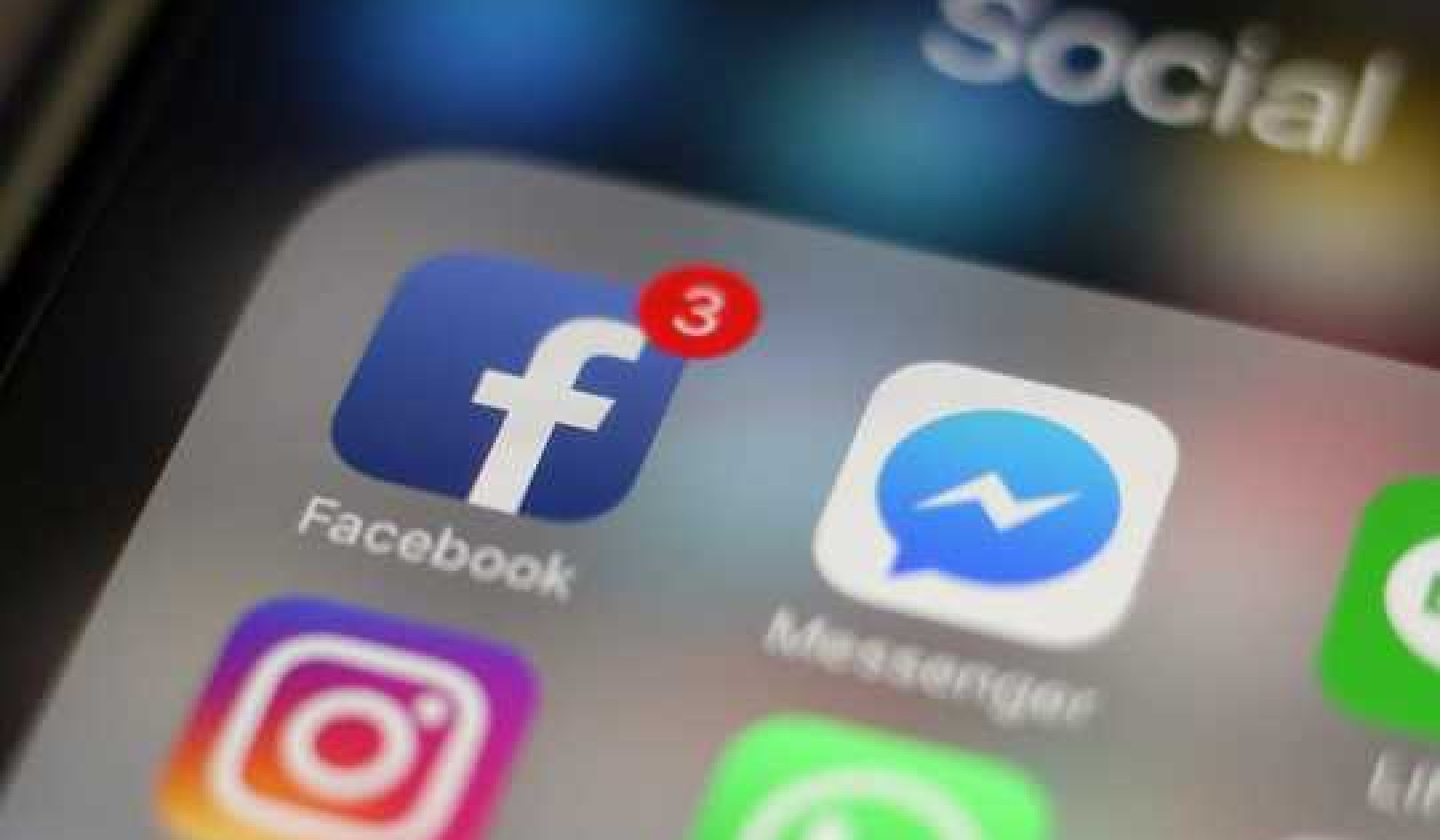 Babies need to make eye contact with people, not phones. AFP via Getty
Babies need to make eye contact with people, not phones. AFP via Getty
The Environmental Protection Agency first warned of secondhand smoke in 1991, some 30 years after scientists determined that smoking cigarettes causes cancer. Today, a growing body of research points toward a new indirect health hazard.
Just as frequently being around other people while they smoke can cause cancer, heart disease, lung disease and other ailments, what I call “secondhand screen time” could be endangering children.
By not limiting their own phone use, parents and other caregivers may be unwittingly setting kids up to be addicted to screens.
An addiction
A decade ago, the unwillingness – or perhaps the inability – of the college students in my writing classes to stay off their phones for 50 minutes at a stretch catalyzed my interest in screen use. And my students have only grown more unwilling to put down their phones, a trend that has also gotten worse outside of my classroom.
Curious about my students’ phone use, I began researching screen addiction and conducting my own surveys. Roughly 20% of my students have used the word “addiction” when describing their phone habits, and many more have expressed misgivings about their phone use.
While I encourage them to examine their habits, I blame students less for their tech addiction than I did a decade ago. They’ve learned this behavior from adults – in many cases since the moment they were born.
Checking Twitter in front of kids is not the same as blowing smoke in their faces. Smartphones and cigarettes do, however, have some things in common. Both are addictive and both became wildly popular before researchers learned about their addictive properties and health dangers.
On average, American adults touch their phones over 2,500 times a day. According to the American Psychiatric Association, that fits the definition of addiction: “a condition in which a person engages in the use of a substance or in a behavior for which the rewarding effects provide a compelling incentive to repeatedly pursue the behavior despite detrimental consequences.” While researchers continue to study the effects and extent of phone use, the scientific consensus is that phone addiction is real.
Desiring objects
What’s a parent to do while nursing or when an infant falls asleep on one’s chest?
Perhaps they’ll read the news, check email, text friends or scan social media parenting groups. A phone or tablet can be a portal to the rest of the world – after all, caring for small children can be isolating.
But kids, even babies, notice these habits. They see parents reach again and again for a seemingly magical object that glints and flashes, makes sounds and shows moving images.
Who wouldn’t want such a wonderful plaything? Trouble is, if the desire for a phone builds in infancy, it can become second nature.
Troubling research
Some researchers have already found links between excessive screen time, particularly phone use, and attention deficits, behavioral issues, sleep problems, impaired social skills, loneliness, anxiety and depression.
Researchers from Cincinnati Children’s Hospital Medical Center and Israel’s Educational Neuroimaging Center recently published a study in JAMA Pediatrics that focused on cognitive-behavioral risks of exposing preschool-aged kids to screen-based media. That includes video games, TV, websites and apps. Phones are particularly problematic, the study found, because they provide mobile access to all of this media. They found that screen exposure impedes the formation of nerve systems involved in language development, expression and reading skills.
These findings point to yet another consequence of excessive screen time, especially for younger kids. Since 96% of Americans have phones, many babies are exposed to screens soon after they’re born and the stakes of such exposure are becoming better understood.
To be sure, it’s hard if not impossible to assess how much time Americans are spending looking at screens given the countless different ways that people use their devices. And because not all screen time is equally good or bad for you, some experts are calling for a “Human Screenome Project” to assess what we’re doing on our screens and to figure out what the consequences might be.
Developing brains
When younger kids are exposed to harmful, habit-forming behaviors, such as smoking cigarettes or gambling, they’re more likely to become addicted to those same substances or behaviors. Exposure to secondhand smoke itself also can make kids prone to cigarette addiction.
While scientists don’t yet know for sure if that happens to kids who observe their parents’ phone use, there’s ample evidence that kids learn from and mimic their parents’ behaviors. If children see their parents do something they’re not allowed to do, that behavior doesn’t seem bad or wrong, and they may desire the “forbidden fruit” all the more.
My mom, a lifelong smoker, had her first cigarette when she was 12. After dinner one night, her parents, both of whom smoked multiple packs of unfiltered cigarettes each day, lit up and her dad handed her the pack. This was in the 1950s, before people knew the effects of smoking.
When she took a drag, instead of coughing, she felt like she’d “died and gone to heaven.” My mom’s parents smoked so often in front of her that she both wanted to do it and knew exactly how.
When I see toddlers navigate smartphones as though they were born using them, this story springs to mind.
I’ve seen parents hand over iPhones to 2-year-olds to placate them in restaurants, just as mine sometimes plopped me down in front of the TV to keep me occupied. The difference is that I couldn’t bring the TV to the dinner table, or anywhere else.
John Hutton, a pediatrician who researches the effects of phone use, has found that roughly 90% of U.S. babies are exposed to screen time before their first birthday, and that it’s not uncommon for 2- or 3-month-olds to watch phones.
 Addiction to mobile devices is widespread. Jiangang Wang/Getty Images
Addiction to mobile devices is widespread. Jiangang Wang/Getty Images
Breaking old habits
The human brain continues developing until we’re roughly 25 years old, so teenage behavior can have a significant and lasting impact. Research indicates that the adolescent brain is particularly prone to risk-taking, peer-seeking and lack of impulse control.
Between that and a lifetime of fetishizing screens, is it any wonder that so many teenagers won’t put their phones down?
My college students describe the disconcerting and disappointing quiet that sets in when they’re at a table in the dining hall or in someone’s dorm room and everyone’s deep into a phone. Phones facilitate an incalculable amount of important interactions for them, especially with friends and family back home.
But by the time they’re in college, they can recognize and articulate at least some of what they’re missing when they spend so much time staring at screens. They can assess their own habits and implement some changes if they so choose, but it makes sense that they, having been raised with this techno-magic, would never think of giving it up.
A 2-month-old or a 2-year-old, however, can’t do that. Since the frontal cortex of an adolescent brain is still developing, teenagers aren’t fully able to reason or control impulses.
Perhaps, most adults can’t either. But since it’s up to today’s adults to shape younger generations, we should be aware of the secondhand effects of our own behavior.
About the Author
Joelle Renstrom, Lecturer of Rhetoric, Boston University
This article is republished from The Conversation under a Creative Commons license. Read the original article.

Related Books:
Atomic Habits: An Easy & Proven Way to Build Good Habits & Break Bad Ones
by James Clear
Atomic Habits provides practical advice for developing good habits and breaking bad ones, based on scientific research on behavior change.
Click for more info or to order
The Four Tendencies: The Indispensable Personality Profiles That Reveal How to Make Your Life Better (and Other People's Lives Better, Too)
by Gretchen Rubin
The Four Tendencies identifies four personality types and explains how understanding your own tendencies can help you improve your relationships, work habits, and overall happiness.
Click for more info or to order
Think Again: The Power of Knowing What You Don't Know
by Adam Grant
Think Again explores how people can change their minds and attitudes, and offers strategies for improving critical thinking and decision making.
Click for more info or to order
The Body Keeps the Score: Brain, Mind, and Body in the Healing of Trauma
by Bessel van der Kolk
The Body Keeps the Score discusses the connection between trauma and physical health, and offers insights into how trauma can be treated and healed.
Click for more info or to order
The Psychology of Money: Timeless lessons on wealth, greed, and happiness
by Morgan Housel
The Psychology of Money examines the ways in which our attitudes and behaviors around money can shape our financial success and overall well-being.





















